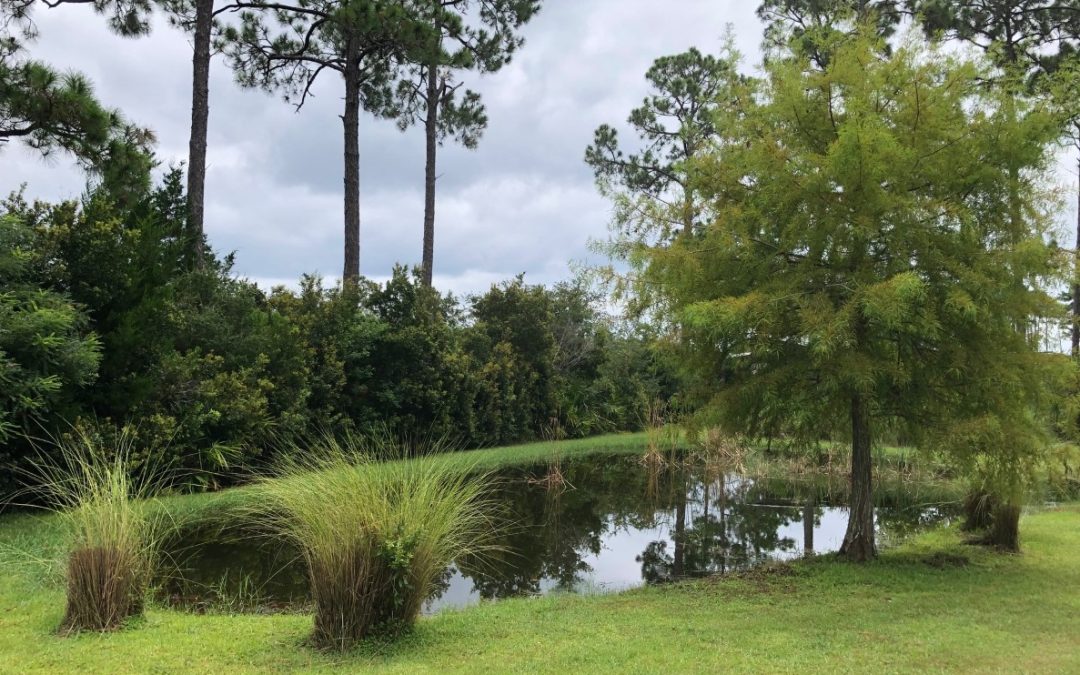
by Stephen Greer | Aug 11, 2021
One big goal of establishing a home lawn and landscape is to enjoy an attractive setting for family and friends, while also helping manage healthy soils and plants. Soil compaction at these sites can cause multiple problems for quality plants establishment and growth. Soil is an incredibly important resource creating the foundation for plants and water absorption.
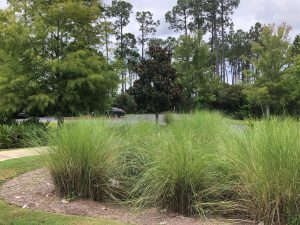
Photo courtesy: Stephen Greer, UF IFAS
Soils are composed of many different things, including minerals. In Florida, these minerals often include sand of differing sizes and clay in the northern area of the counties in the panhandle of Florida. Soil is also composed of organic matter, nutrients, microorganisms and others. When soil compacts, the air spaces between the sand or clay are compressed, reducing the space between the mineral particles. This can occur anytime during the landscape and lawn construction phase or during long term maintenance of the area with equipment that could include tractors, mowers, and trucks.
What can be done to reduce soil compaction? There are steps that can be taken to help reduce this serious situation. Make a plan on how to best approach a given land area with the equipment needed to accomplish the landscape of your dreams. Where should heavy equipment travel and how much impact they will have to the soils, trees, and other plants already existing and others to be planted? At times heavy plywood may be needed to distribute the tire weight load over a larger area, reducing soil compaction by a tire directly on the soil. Once the big equipment use is complete, look at ways to reduce the areas that were compacted. Incorporating organic matter such as compost, pine bark, mulch, and others by tilling the soil and mixing it with the existing soil can help. Anytime the soil provides improved air space, root will better grow and penetrate larger areas of the soil and plants will be healthier.
Even light foot traffic over the same area over and over will slowly compact soils. Take a look at golf course at the end of cart paths or during a tournament with people walking over the same areas. The grass is damaged from the leaves at the surface to the roots below. Plugging these areas or possibly tilling and reestablishing these sites to reduce the compacted soils may be necessary.
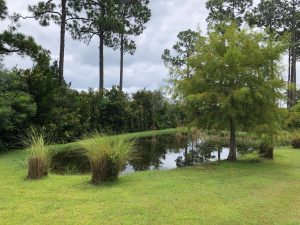
Photo courtesy: Stephen Greer, UF IFAS
Water absorption is another area to plan for, as heavy rains do occur in Florida. Having landscapes and lawns that are properly managed allow increased water infiltration into the soil is critically important. Water runoff from the site is reduced or at least slowed to allow the nutrient from fertilizers used for the plant to have more time to be absorbed into the soil and taken up by the plants. This reduces the opportunity for nitrogen, phosphorus, and other nutrients to enter water areas such as ponds, creeks, lagoons, rivers and bays. Even if you are miles from an open water source, movement of water runoff can enter ditches and work their way to these open water areas, ultimately impacting drinking water, wildlife, and unwanted aquatic plant growth.
Plan ahead and talk with experts that can help with developing a plan. Contact your local Extension office for assistance!
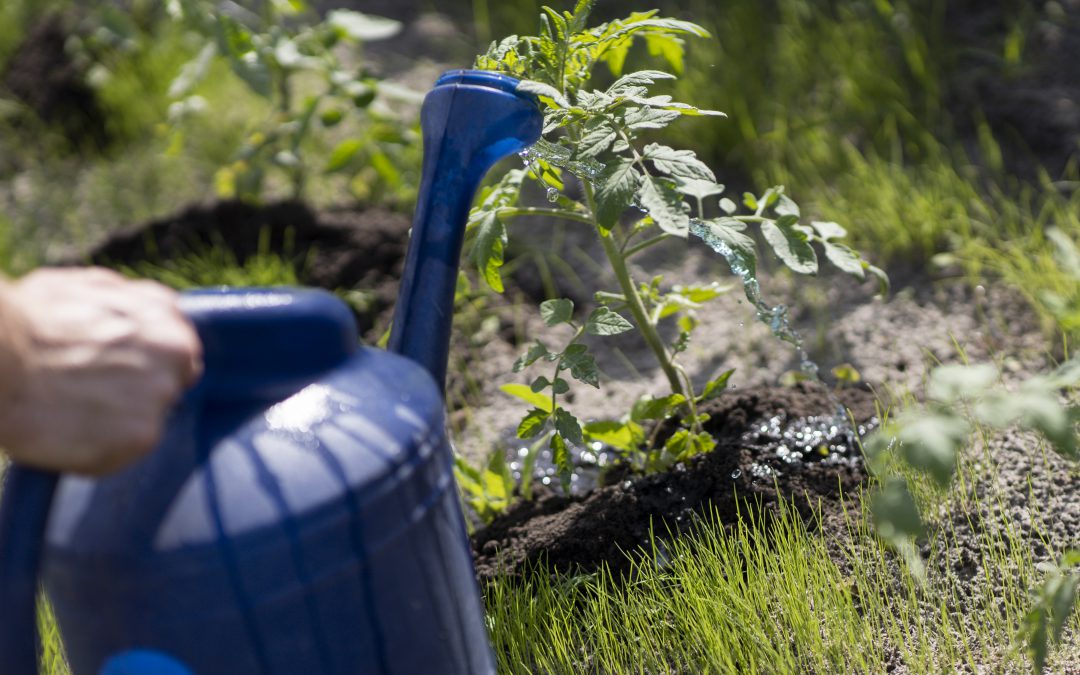
by Ashley Stonecipher | Aug 5, 2021
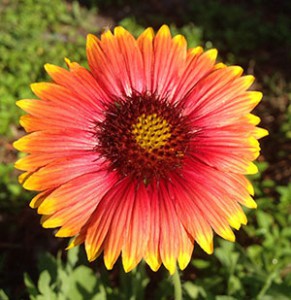
Native Gaillardia. Photo courtesy UF/IFAS.
The hottest days of the summer are here and you might be thinking, “There is no way something could survive this heat!”. You might also be wondering “What can I do in my landscape?” Well, you are correct – it is hot and there are not many plants that thrive in this type of weather, but the good news is we are at the end of the summer season and there are things we can begin to do to get ready for fall. It’s not too late to get the last of the summer vegetables going such as lima beans, cucumbers, eggplants, and peppers. Many cool season crops can also be planted by seed now and tomatoes will thrive going into the fall season. See Vegetable Gardening in Florida
There are some heat-tolerant annuals like vinca, gaillardia, bulbine, and coleus that can be planted now in the landscape. See Annuals. Any time of the year, even late summer, bulbs like Aztec Lily, Butterfly Lily, Walking Iris, and Spider Lily can be planted. See Bulbs for Florida. Not many herbs do well in our Florida sun this time of year, but Bay Laurel, Ginger, Mexican Tarragon, and Rosemary can be planted as transplants now but not as seeds just yet. See Herbs.
August and late summer is the time of year that you may be seeing damage in your lawns. This could be caused by insects, disease, or irrigation failure. It is important to determine the cause, so the proper remedy is used. Some ways to avoid lawn damage are checking your mower blades regularly and making sure they are sharp. Also only cut the top one third of the blade of grass to not stress it in the heat of the day. It is good practice to test your irrigation clock and have a rain sensor. Some municipalities in north Florida prohibit the application of fertilizer during the summer rainy season from June to September so check with your local extension office. See Insect Management in Your Florida Lawn
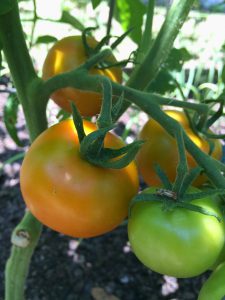
You can become more self-sufficient by growing your own healthy food in your backyard. Photo by Molly Jameson.
There are some other maintenance measures you can take in August to help your landscape and prepare for the fall season. If older palm fronds are yellowing, this could indicate a deficiency in magnesium or potassium. Talk to your local agent or visit your local store for an appropriate palm fertilizer. See Palm Nutrition and Fertilization. Are you holding on to those beautiful fall mums or decorative Christmas poinsettias? Now is the time to pinch them back to allow time for buds to set for winter blooms. Finally, it is a good time to deadhead (remove old blooms) and fertilize flowering annuals and perennials. We’ve had substantial rain this summer, so keep in mind that the soil could be lacking nutrients. A soil test can give you data that indicates what you need for the up-and-coming growing season.
Information for this article can be found in the UF/IFAS EDIS publication: “North Florida Gardening Calendar” by Sydney Park Brown: ENH1190/EP451: North Florida Gardening Calendar (ufl.edu)
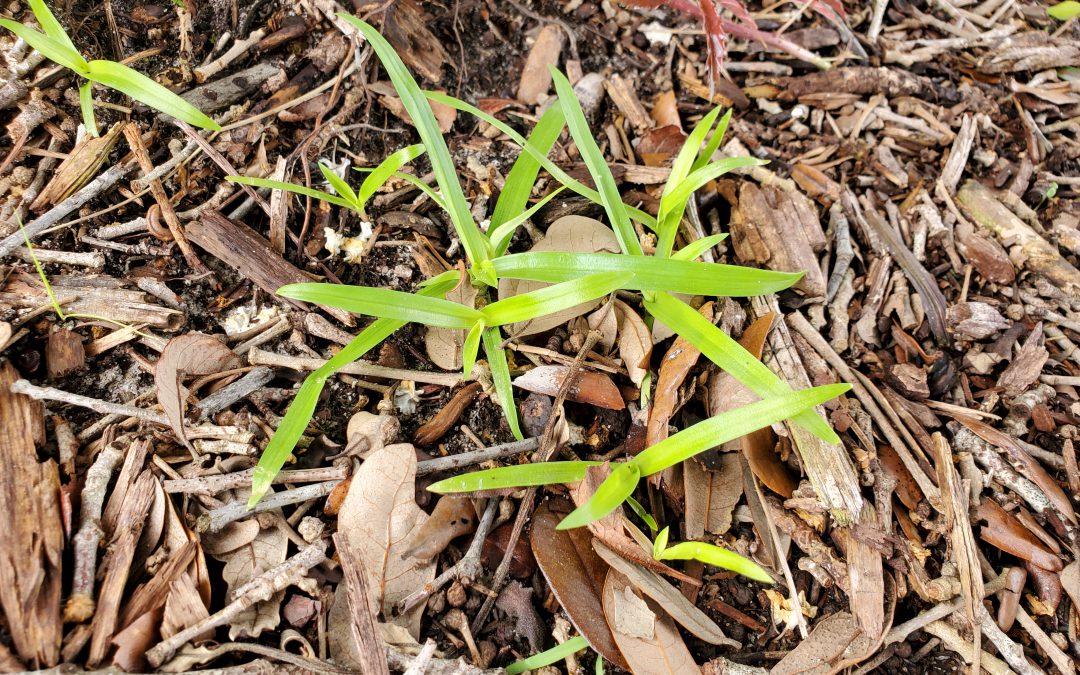
by Daniel J. Leonard | Jul 22, 2021
If you’ve taken care of your yard properly from spring green-up to now (mid-July), you might think you can comfortably coast into the cool temperatures of fall without any problems. You would be mostly right, save for one extraordinarily tough weed that waits until the depths of summer to rear its troublesome head: Doveweed (Murdania nudiflora).
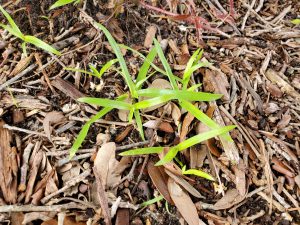
Doveweed seedlings just emerged on July 9, 2021. Photo courtesy of Daniel Leonard.
Doveweed is an insidious invader of Panhandle lawns. In the Panhandle, Doveweed germinates (sprouts) long after most other summer annual weeds, from late May-June when soil temperatures reach ~70°F. This allows it to sneakily avoid spring pre-emergent herbicide applications and even early summer post-emergent applications that target common weeds like Florida Pusley, Spurge species, and others. Doveweed also looks an awful lot like many of our common lawn turfgrasses, especially Centipede and St. Augustine Grass. It possesses thick, shiny, grass-like foliage and even grows in a spreading, low to the ground fashion. This mimicry causes many homeowners to not realize there is a problem until it’s too late. Once Doveweed is mature and displaying its characteristic purple flowers, it is very difficult to control. Finally, Doveweed is extremely tough and aggressive, particularly thriving in moist areas of the lawn. In these areas, Doveweed can easily outcompete the desirable turfgrass and, without intervention by you, will soon have the whole lawn to itself.
Controlling Doveweed is no easy task and requires a combination of practices to keep it out of your lawn. The first line of defense against any weed, Doveweed included, is through proper cultural practices. In turfgrass lawns, this means ensuring that you mow your lawn regularly and at the proper height (2.5” or so for Centipedegrass), keeping the lawn irrigated during droughty periods, fertilizing based on a soil test, etc. Being diligent in the above tasks will go a long way to ensuring that your turfgrass is healthy and better able to ward off a Doveweed invasion. However, even when homeowners maintain their turf perfectly, chemical herbicides are usually required to keep Doveweed at bay.
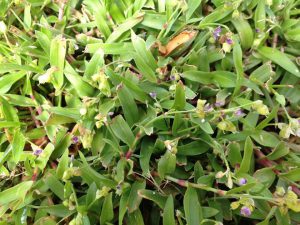
Doveweed patch in St. Augustine Sod.
While many commonly used homeowner herbicides are not effective on Doveweed, there are several quality options at your disposal.
- Doveweed is most easily controlled with preemergent herbicides, specifically one of the following: Atrazine, Pennant Magnum (S-metolachlor), Tower (dimethenamid), and Specticle (indaziflam). The issue with pre-emergents is that most folks shelve them after spring application in February or March. Since these products lose their efficacy after 4-6 weeks, Doveweed’s emergence in May is undeterred. To obtain control on Doveweed with these products, split the spring application and apply once in late Feb/early March and again in mid-late April.
- Doveweed can also be controlled by post-emergent herbicides after it is up and growing, though multiple applications may be required. The most effective formulations contain a combination of 2,4-D or Dicamba and other herbicides. While most of these products have at least fair efficacy on Doveweed, stronger, more expensive products like Celsius, Tribute Total and others provide better results.
- If Doveweed has already displaced turfgrass in large areas of your lawn, you may unfortunately be better off to make an application of a non-selective herbicide like glyphosate (Roundup), kill out the entire area of infestation and start over by resodding.
While Doveweed is a major problem in Panhandle lawns, it doesn’t have to be in yours! By keeping your turf healthy with proper cultural practices and making timely applications with effective herbicides, your lawn can be a Doveweed free zone! For assistance in Doveweed identification in your lawn, help choosing herbicides and calculating application rates, or any other horticultural information, contact us at the UF/IFAS Calhoun County Extension office! Happy Gardening!
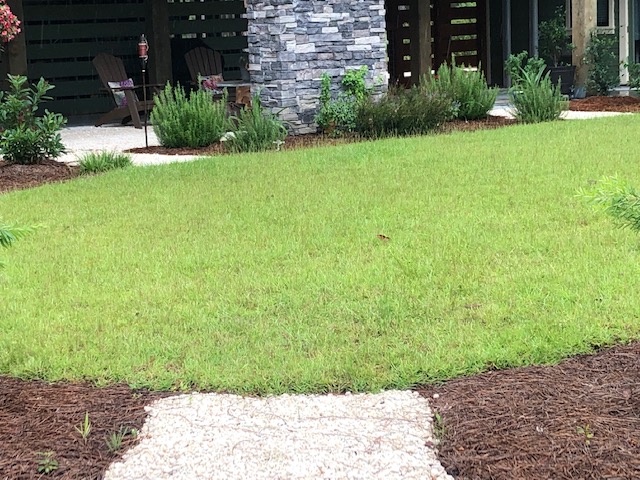
by Stephen Greer | Jul 1, 2021
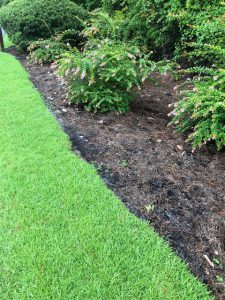
Photo Courtesy: Stephen Greer
Lawn areas come in all sizes and shapes. Some are large open expanses providing long views and others are smaller versions surrounded by shrubs and trees creating a more private and secluded setting. There are a number of reasons for reducing the size of a lawn with some coming into play with your decisions. A home lawn is often an important part of the landscape that provides a place to play outdoors from picnicking, tossing the ball to taking a quite stroll.
Maintaining a healthy lawn is important to an overall performance of this part of the landscape. Several factors are involved in the success in keeping a strong and resilient lawn. Understanding the needs of a grass to remain healthy involve soil testing to address soil pH and nutrient needs plus water challenges. Misuse of fertilizer and over irrigation can be costly to you and to the overall health of the lawn. These decisions can lead to reducing lawn size to managing cost or removing underused areas.
There are big benefits to reducing your lawn from saving time in mowing, trimming and other manicuring needs to saving energy costs involving the lawn mower not to mention reducing pollution from the mower or weed eater. The reduced amounts of pesticides needed to manage weeds and disease to the lawn saves time and money.
Another way to look at the reducing the size of our lawn is there will be more space for expanding plant beds and potential tree placement. These settings increase the opportunities for a more biodiverse landscape providing shelter, protection and food options for birds and other wildlife.
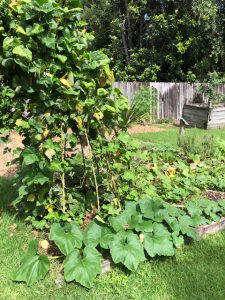
Photo Courtesy: Stephen Greer
The lawn can serve as a transition space that leads from one garden room space to another, while still offering a location to bring the lawn chair out to enjoy all that is around your lawn. Lawns and the landscape are ever changing spaces, especially as your trees and shrubs grow and mature to sizes that can directly impact the lawn performance. Often levels of shade will diminish edges and other areas of the lawn. This often will define the reduction of the lawn size moving going forward. Just remember that lawns and landscapes occupy a three-dimensional space involving the horizontal, vertical and overhead spaces. Just look around and think about what is best for you, your family and the setting.Are you more interested in developing other parts of the landscape? With many of us spending more time at home over the last year plus it gave time to think about the outdoor areas. Growing our own vegetables may be a new or expanding part of the landscape with the use of raised beds or interplanting into the existing landscape. Gardening can assist in reducing stress while at the same time providing that fresh tomato, lettuce, herbs and other fun healthy produce.
What ever your decisions are enjoy the lawn and landscape. For additional information, contact your local University of Florida IFAS Extension office located in your county.
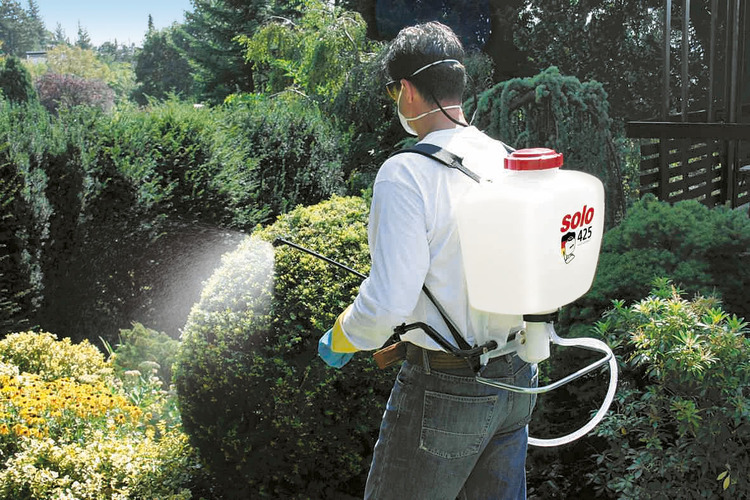
by Daniel J. Leonard | Jun 24, 2021
Nutsedge, commonly called “nutgrass”, is one of the most important and difficult to control weed pests in the world. Found in nearly every growing situation, from crop fields and vegetable gardens to landscapes and turfgrass lawns, I bet every person reading this has contended with controlling nutsedge at some point! Nutsedge (a common term to describe several species of weeds in the genus Cyperus) not only reduces curb appeal, but also h as a detrimental effect on desirable plantings around it. Because of its aggressive nature and dense root system, it competes heavily with “good” plants for water, light, and nutrients, causing the plants we are trying to grow to suffer. This is a weed that you definitely do not want in your lawn or landscape!
To keep nutsedge at bay, it’s important to know a few facts about it. First, “nutgrass” is not a grass at all, but a totally different class of plants known as sedges. This is important because selective herbicides used to kill grassy weeds will not affect nutsedge. Though they’re grass look-alikes, sedges can be distinguished by their distinctive triangular shaped stems. You can actually feel the three edges of nutsedge stems. If ever in doubt over whether a weed is a grass or a sedge, remember “sedges have edges”. Most sedges are perennials, dying back to the ground each year in winter and reemerging from tubers, called “nutlets”, that can survive over a foot under the ground! Also, while sedges generally prefer wet areas, they aren’t very particular about where they grow and are equally at home in sand or clay, wet or dry, and sun or shade. All these characteristics make sedges hard to control and cause much consternation amongst gardeners!
The first line of defense in controlling nutsedge is keeping a dense cover over any bare ground. In lawns, this means maintaining a thick, healthy turf as weeds love to enter lawns through thin or patchy areas. This can be accomplished by mowing regularly, fertilizing appropriately based on a soil test, not overirrigating while also not allowing the grass to suffer badly during droughty periods. Easier said than done. In landscape beds, preventative control is a little easier. First, as nutsedge prefers wet areas, only irrigate when it is needed. During much of the year, most established landscapes can get by on rainfall alone. Next, simply maintain a roughly 3” layer of pine straw, wood chips, pine bark, or other natural mulch of your choice. Doing so will reduce all manner of weeds, nutsedge included, and is generally beneficial for ornamental plants as well! I do not recommend landscape fabric as it is a pain to install and remove and is not extremely effective at reducing nutsedge as the sedge’s sharp growing points punch right through most plastic or fabric mulches.
Though mulching and other preventative measures can reduce nutsedge numbers, those methods alone are usually not enough and chemical herbicides are required. Fortunately, in Panhandle lawns and landscapes, there are several excellent, readily available options for sedge control: imazaquin and halosulfuron.
- Imazaquin is the active ingredient in the common product Image Kills Nutsedge and has good activity on most sedge species. It can be applied safely to all the common turfgrass species grown in the area and can even be sprayed right over the top of most common ornamental landscape plants!
- Halosulfuron is the active ingredient in the product Sedgehammer (available online or at specialty landscape supply stores) and several other generic products. Halosulfuron products provide excellent control of all nutsedge species and are safe to use in all turfgrass species found in Florida. While most landscape plants are tolerant of halosulfuron application, use care and try to only spray it on sedge weeds to avoid any unwanted yellowing or damage.
While both products begin working immediately, it may take several weeks to see sedge weeds start suffering and patience is necessary! Though both products are effective, follow up applications 3-4 weeks later are generally necessary to clean up any surviving sedge.
Nutsedge is a nasty little weed that can be difficult, though not impossible to manage. Through some smart cultural practices and timely applications of either imazaquin or halosulfuron, you can keep your lawn and landscapes nutsedge free! For more information about nutsedge control on your property or any other agricultural or horticultural topic, contact your local UF/IFAS County Extension office! Happy Gardening!













